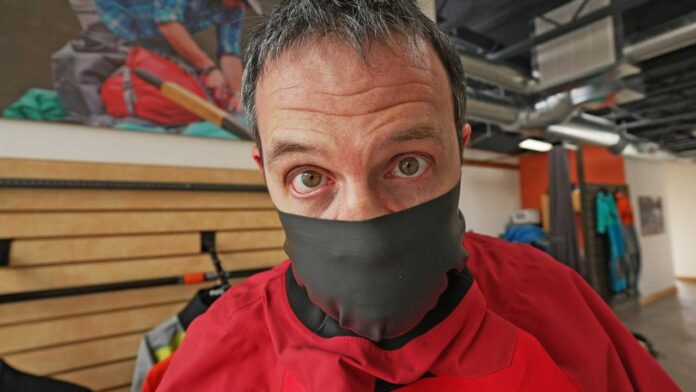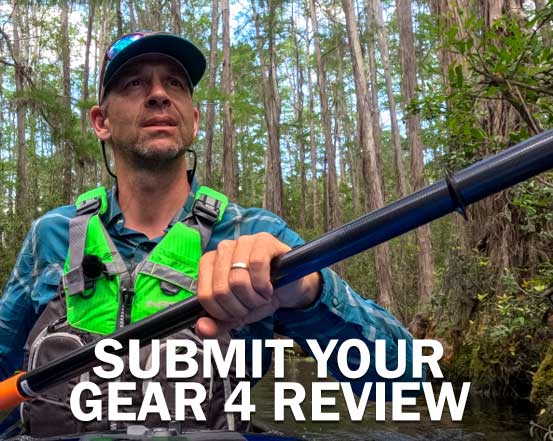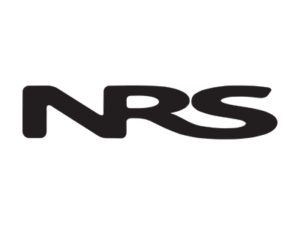Whether you're kayaking or canoeing in cold weather or hot weather, having the right paddling top will make a huge difference to not only your comfort, but also to your safety. So, how do you choose the best paddling tops for you?
Factors to Consider When Choosing a Paddling Top
There are a number of factors you need to consider when choosing what to wear out on the water. What you wear will affect both your comfort and, more importantly, your safety. Choosing the right paddling top is very important.
There are five main factors that will influence the type of gear you will need when kayaking or canoeing.
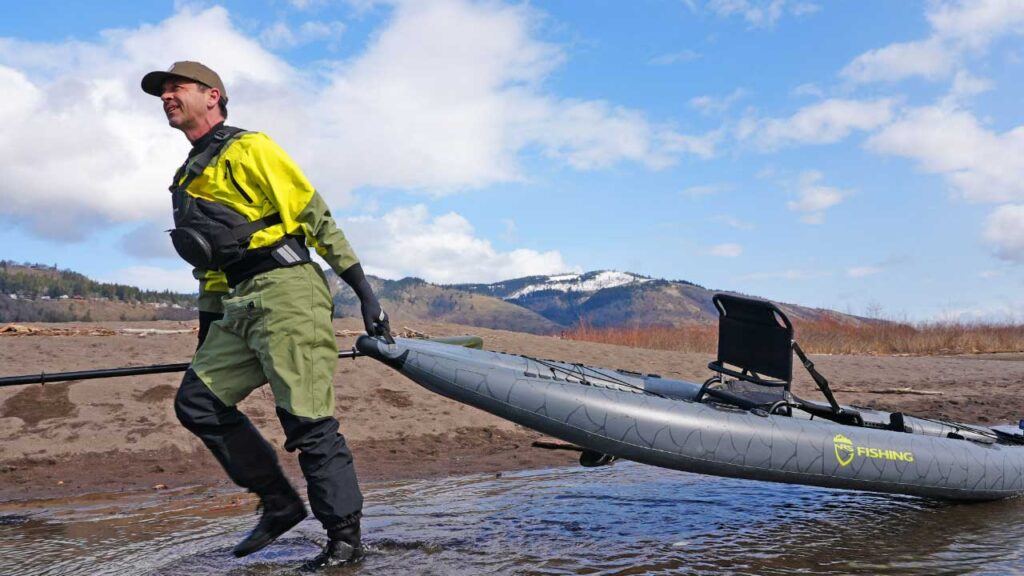
1. Water and air temperature in choosing the best paddling tops
Water and air temperature play the biggest role in deciding which paddling top to wear. This is because wearing the wrong clothing when dealing with cold water can make hypothermia a real threat.
The general rule is that you need to choose a paddling top that will allow you to be comfortable when paddling, but will also allow you to survive if you end up swimming. You need to be able to stay warm when in the water for an extended period of time.
For that reason, the trickiest conditions are when the air is warm but the water is cold. It may be tempting to wear something lighter, but it is essential that you dress appropriately to be able to deal with an unexpected swim in cold water.
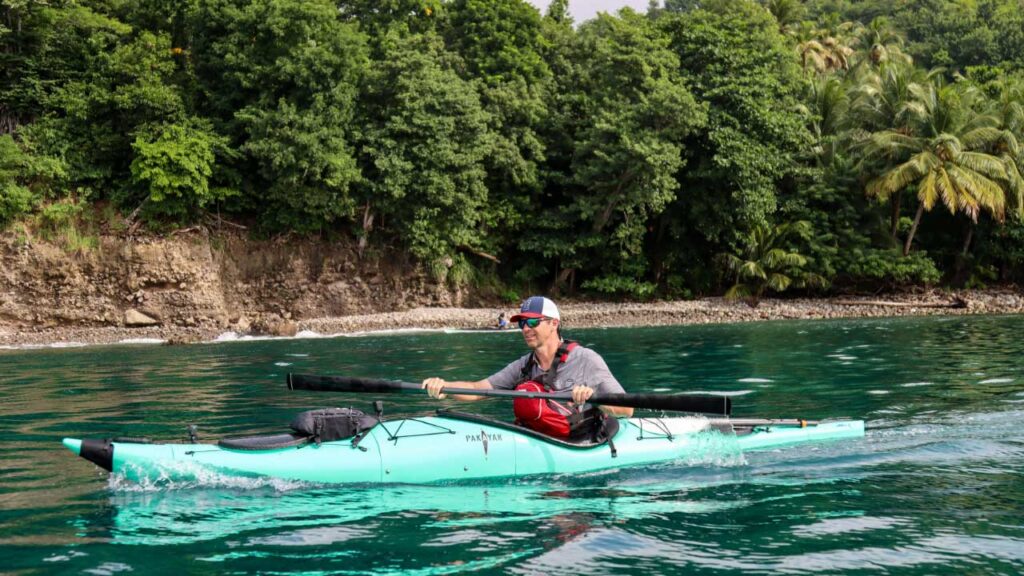
2. The type of paddling you will be doing
This is the second most important factor in dictating the type of paddling top you wear. If you are going to be paddling in rough conditions, maybe white water kayaking or surf kayaking, you will get soaked with water. You will get colder much quicker in these conditions unless you are wearing the right paddling top.
3. Paddling Skill Level and Experience
This plays a much smaller role than the above factors. Whatever your skill level, you need to dress appropriately to be able to handle taking an unexpected swim. However, with skill, you might be able to get away with less protection simply because you are less likely to take a swim in certain conditions. Beginners will need much more protection as they will likely spend more time in the water and swimming.
That being said, some of the biggest problems arise when skilled kayakers perceive the risks of swimming to be very low. They will sometimes then choose to underdress in order to be more comfortable actively paddling. If they do end up taking an unexpected swim, hypothermia then becomes a real threat.
4. Your predisposition to getting cold
This factor is a little more obvious. If you are somebody who gets cold easily you will need to wear more than somebody who doesn’t!
5. Budget
Paddling tops come with a huge range of price tags. You can spend anything from about $100 (USD) all the way through to tops that cost $600 (USD). That means the budget will obviously play a role in the type of paddling top you can choose.
It is important to realize that budget is a limiting factor here. If you cannot afford a top that has a certain level of protection it means that you cannot safely paddle in certain conditions.
Paddling Tops for Cold Conditions

The Dry Top
When paddling in the coldest conditions, this is the best paddling top to wear. Next to dry suits they provide the ultimate protection.
Dry tops have latex rubber gaskets that go around your wrists and neck and create a waterproof seal. This stops any water from getting inside. Theoretically, you can stay 100% dry when wearing a dry top, however, depending on the conditions you are paddling in, you might still get a little damp.
Dry tops do come with a higher price tag. At the top end of the market, you can get dry tops like the paddling top I use, the NRS Rev Gore-Tex Pro dry top, for around $600 (USD). Thanks to the Gor-Tex fabric this is a higher-end paddling top. Gore-Tex is the ultimate durable, breathable, and waterproof fabric, but it does push the price of a dry top up.
You can get dry tops without Gore-Tex for significantly less. Dry tops with latex gaskets, that are still waterproof and breathable can cost around $300-350 (USD). This is still a lot of money, but in some paddling conditions, is necessary.
Wet Suits
You may wish, in cold conditions, to wear a wet suit. Unlike a dry top that is designed to stop any water from getting in, a wet suit is designed to keep you insulated when wet. The joy of wetsuit tops is that they are a lot less expensive than a dry top. The downside is that they only keep you insulated when wet, so, unless you have a really thick wetsuit, it will feel a little colder.
With a thicker wetsuit, you do encounter different issues, including mobility when paddling. This will cause you to lose performance in some cases. But the reality is that if you want to paddle in cold conditions but cannot afford a dry top, you don’t really have a choice. You will need to have a thick wetsuit that allows you to survive in cold water if you take an unexpected swim.

Semi-Dry Top
The semi-dry top is the next step down from a dry top. The difference between this and a dry top is that, instead of having latex gaskets, which can be uncomfortable and tight, a semi-dry top has neoprene gaskets around the neck and wrists. These will create a seal to keep you dry, but it will not work as well as the latex gaskets on a dry top – hence it is known as the semi-dry top.
The higher-end semi-dry tops might still have latex gaskets at the wrists, but keep the neoprene gasket around the neck for comfort. This is great for paddling in rough water or paddle surfing because it stops the rush of water from going up your sleeve and dripping down your body.
At the cheaper end of the spectrum some semi-dry tops, such as the NRS Riptide have velcro seals at the neck. This obviously means that they do not keep you as dry. But they will still do a good enough job for some conditions and are a lot more affordable.
You can purchase a semi-dry top with short sleeves, such as the kokatat knappster. This is not a primary paddling top, but it can be useful as extra gear for those who paddle in a variety of conditions.
While the seals may differ on different semi-dry tops, all semi-dry tops have a double tunnel. This means that they have a second layer underneath that is connected to the top layer. The idea behind this is that you can put your paddling spray skirt between the layers. This will stop any rush of water from going up your top and soaking your underlayers. The water will not be able to penetrate through the second layer keeping you dry and warm.
There any many different models of semi-dry tops available. The one you choose really comes down to a matter of budget and preference. The differences between spending $175 (USD) to $300 (USD) come from things like the type of gasket used, whether it has a hood and the material it is made from.
Splash Tops or Paddling Tops
This is again the next step down in terms of protection. These are the most basic paddling tops. They typically have velcro closures at the neck and the wrist and are designed to keep water from gushing in, but they will not keep you dry. That is why they are less expensive. They range from around $100 (USD) to about $200 (USD) at the high end.
Multifunctional Splash Wear
All of these above tops are designed for paddling. What that means, particularly with kayaking, is that they are made for sitting and will be fairly short. So none of this kit can really double as rain gear.
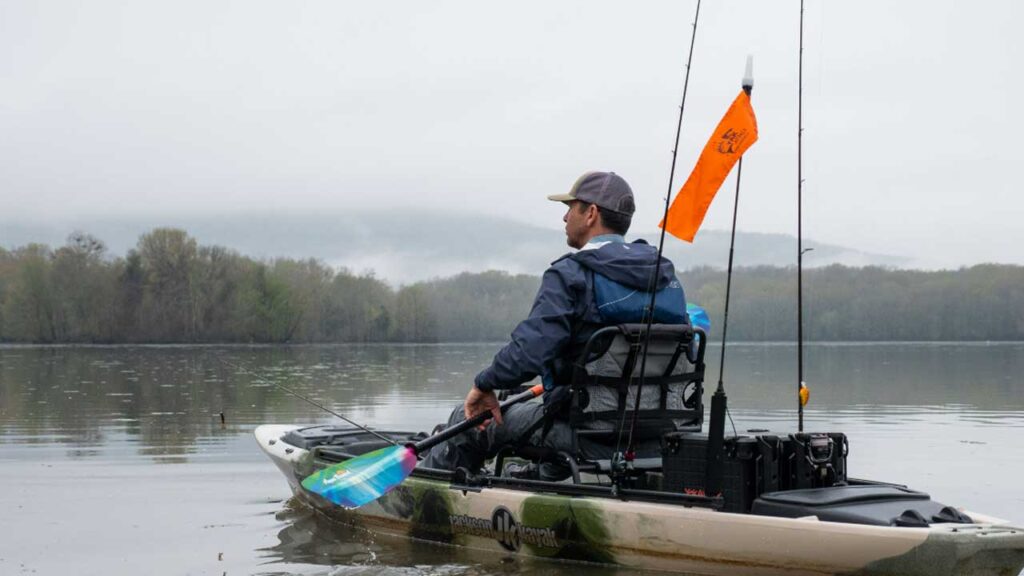
But there is splash wear that have multifunctional purposes. For example, the NRS Teeko jacket, which is a jacket I travel everywhere with. This is slightly longer but has velcro seals at the wrist and a hood. It is less useful for kayaking trips but can be very useful for canoeing trips or hiking trips. It is an all-purpose raincoat that doubles as a paddling top.
A multi-purpose top can be great for your budget as it can be used for more than just kayaking. But it does come with real limitations. For example, if there is no neck seal at all, and you take a swim, the water will just come gushing in. It provides very little in terms of protection.

Underneath Layers
Of course, the paddling top you choose to wear is only the outer shell. All of the tops mentioned so far will provide different levels of protection from the wind and water, but it is what you wear underneath them that will keep you warm.
So what do you wear underneath? Well, this will depend entirely on the temperature outside. But what I tend to wear is a thin moisture-wicking top against my skin because I will be sweating. On top of that, if it is colder, I will be wearing an insulating layer which might be as thick as a fleece layer if it is really cold. The great thing about layering is that you can always add or remove layers depending on how warm you get.
So How Do You Decide Which Cold Weather Paddling Top to Wear?
I'd argue against deciding which paddling top to wear based on budget, because the paddling top is a very important piece of safety gear. As a very general rule, if the water temperature is below 60 degrees Fahrenheit, your paddling top is functioning as a piece of safety gear. As you expose yourself to colder and colder paddling conditions, you need to make the step up to more protective paddling tops. Otherwise, you may be putting yourself into a life-threatening situation.
Paddling Tops for Hot Conditions
Gear for hot conditions is far less technical. But there are a couple of pieces of gear that are worth noting. The purpose of these paddling tops is to provide comfort, keep you cool, and protect your skin from the sun.
The NRS Silkweight Shirt
This shirt is kind of like a rashguard but is not tight-fitting. It is more like very a light t-shirt that not only keeps the sun off of you but is also moisture-wicking. Great for keeping cool.
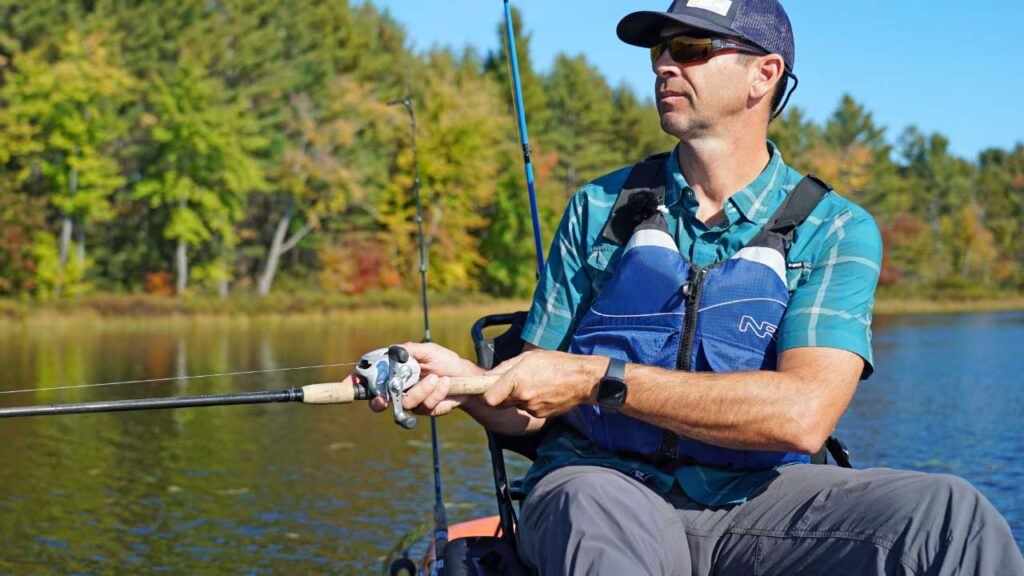
The NRS Guide Shirt
I love paddling in my NRS Guide shirt. This shirt has stretch panels on the side and the underarms. That means that there are no restrictions whatsoever when paddling. It doesn’t feel like you are wearing a shirt at all.
Thin Wetsuit Top
You can purchase thin wetsuit tops with long or short sleeves. They hug the body tightly in order to insulate the body when wet. They are perfect when kayaking on rough water when the air and water temperature are warm. You know you will get wet and might want a layer of insulation.
Choose Your Paddling Top Wisely
There is no simple way to know which type of paddling top to wear, but this blog post should shed some light on the types of tops available. It is always important to remember that in many paddling conditions, the paddling top you choose to wear comes down to safety and not just comfort. The reality is that if you do not have the right paddling gear there are some conditions that you just cannot paddle in.

Lighter Tops: NRS Silkweight Short sleeved shirt, NRS Silkweight Long-Sleeve Shirt, NRS Guide Short Sleeve Shirt, NRS Hydroskin .5 Shirt
Paddling Jackets and Dry Tops: NRS Flux Drytop, NRS Riptide Splash Jacket, NRS Teeko Paddling Jacket, NRS Stratos Shorty Semi-Dry Paddling Top
Full Dry Suit: NRS Axiom Dry Suit
PFDs/Life Jackets: NRS Zen PFD, NRS Chinook PFD (fishing), NRS Odyssey PFD (Touring and Rec)
Kayaks: NRS Pike Inflatable kayak, Jackson Kayak Knarr, Pakayak and the P&H Leo
Paddles: Gearlab Outdoors IPIK, Aqua Bound Manta Ray Carbon 2-piece, Aqua Bound Whiskey Fiberglass Straight Shaft
Sunglasses: Wiley X



